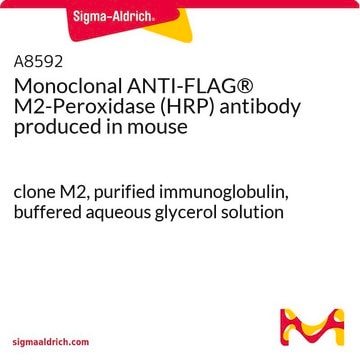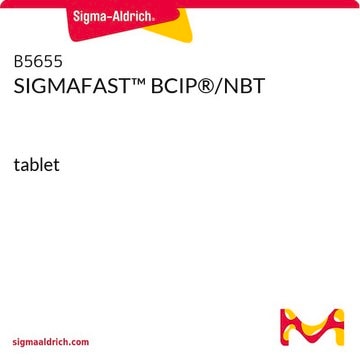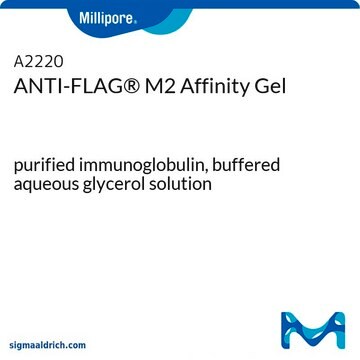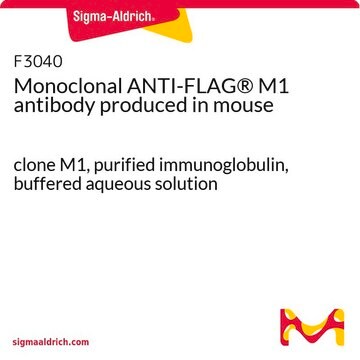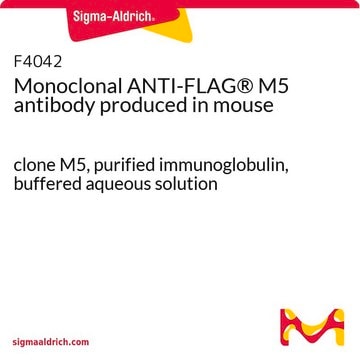A9469
Anticorpo monoclonale ANTI-FLAG® M2
clone M2, purified immunoglobulin, buffered aqueous glycerol solution
Sinonimo/i:
Anti-ddddk, Anti-dykddddk
About This Item
Prodotti consigliati
Origine biologica
mouse
Coniugato
alkaline phosphatase conjugate
Forma dell’anticorpo
purified immunoglobulin
Tipo di anticorpo
primary antibodies
Clone
M2, monoclonal
Stato
buffered aqueous glycerol solution
Reattività contro le specie
all
Concentrazione
~1 mg/mL
tecniche
indirect ELISA: 1:20,000
Isotipo
IgG1
Sequenza immunogenica
DYKDDDDK
Condizioni di spedizione
wet ice
Temperatura di conservazione
−20°C
Informazioni sul gene
human ... ALPL(249)
Cerchi prodotti simili? Visita Guida al confronto tra prodotti
Categorie correlate
Descrizione generale
Applicazioni
Western Blotting (1 paper)
- in direct tissue blot immunoassay of sweet orange petioles samples
- in screening internalization of delta opioid receptor
- for screening cell-free protein expression using ELISA
Stato fisico
Note legali
Non trovi il prodotto giusto?
Prova il nostro Motore di ricerca dei prodotti.
Codice della classe di stoccaggio
10 - Combustible liquids
Classe di pericolosità dell'acqua (WGK)
WGK 3
Punto d’infiammabilità (°F)
Not applicable
Punto d’infiammabilità (°C)
Not applicable
Scegli una delle versioni più recenti:
Certificati d'analisi (COA)
Non trovi la versione di tuo interesse?
Se hai bisogno di una versione specifica, puoi cercare il certificato tramite il numero di lotto.
Possiedi già questo prodotto?
I documenti relativi ai prodotti acquistati recentemente sono disponibili nell’Archivio dei documenti.
I clienti hanno visto anche
Il team dei nostri ricercatori vanta grande esperienza in tutte le aree della ricerca quali Life Science, scienza dei materiali, sintesi chimica, cromatografia, discipline analitiche, ecc..
Contatta l'Assistenza Tecnica.

